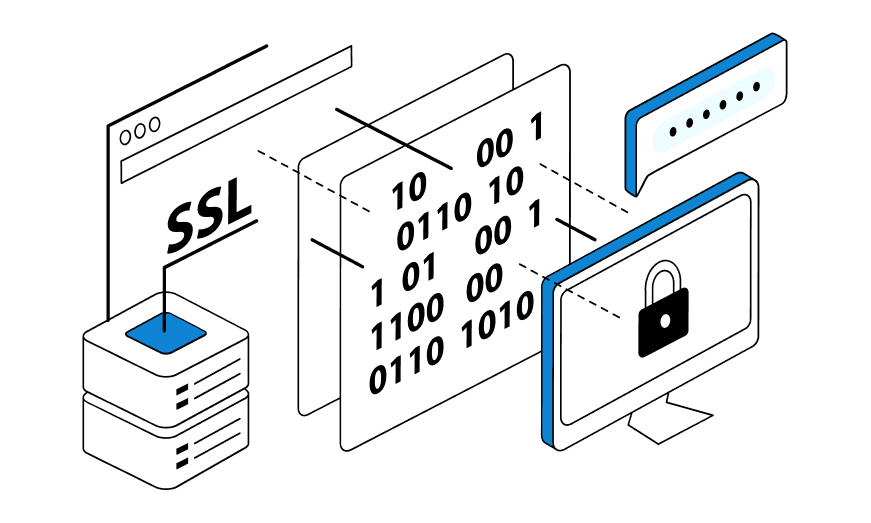
Artificial intelligence has long ceased to be a futuristic idea — today it is becoming an integral part of digital infrastructure, including data management. Internet resources — from small blogs to large e-commerce platforms — handle terabytes of information every day. It is impossible to manage such volumes manually, which is where AI comes into play.
In this article, we will examine how artificial intelligence is transforming data management processes, what tools it offers, and why automation is becoming a necessity rather than a luxury. We will also discuss the impact of AI on data collection, structuring, and analysis on the internet, as well as how this may affect business decisions and user experience.
How is artificial intelligence changing data management?
AI is being implemented in data management not for the sake of fashion, but for the sake of efficiency. With the constant growth of digital information, manual administration is no longer able to cope with the tasks at hand. AI takes over the routine, reduces risks, and helps get the most out of data.
The impact of AI on information collection and processing
In the past, data collection took place in several stages: user input, logging, uploading, structuring, and only then — analytics. AI is capable of immediately recognizing data types, filtering them, eliminating duplicates, and even interpreting them. For example, machine learning algorithms can be used to:
- automatically extract key patterns of user behavior;
- adapt content to individual preferences;
- eliminate noise data that distorts the picture.
In addition, AI can work in real time, which is especially important for high-traffic internet resources. This means that websites can analyze data “on the fly” — from clicks to transactions — and apply adjustments immediately.
Automation of data management on the internet
The most obvious advantage is scalability. AI allows you to process not only more data, but also to do so faster and more accurately. Algorithms are becoming the basis for:
- automatic content classification;
- personalized information delivery to users;
- predictive analytics for business decisions;
- detecting anomalies and security threats.
The use of AI in internet resource management is a step towards building self-learning digital platforms that adapt to audience behavior, predict trends, and improve business efficiency without human intervention.

Artificial intelligence and data analysis: key capabilities
At the current stage of digital environment development, data is becoming not just a resource, but an asset that directly affects the effectiveness of an Internet resource. However, the more data there is, the more difficult it is to interpret, especially given the high variability of user behavior. Artificial intelligence opens up fundamentally new possibilities here, from intelligent filtering to predicting future scenarios.
Optimizing big data with AI
Processing big data manually is an almost impossible task. However, AI not only does it faster, but also better. This allows companies to work with structured, cleaned, and logically organized information rather than raw data.
Key features include:
- Data clustering — AI automatically groups similar objects, simplifying their analysis.
- Noise filtering — eliminates useless or erroneous data, reducing the load on systems.
- Accelerated aggregation — algorithms instantly summarize data from different sources: logs, CRM, social networks, analytical systems.
- Distributed processing — neural networks can simultaneously work with different segments of information, providing parallel analysis.
This means that Internet resources can scale without losing the quality of analysis, remaining flexible even with a constant influx of new data.
Predictive analytics and machine learning
One of the most promising tools is predictive analytics based on machine learning algorithms. It allows you to not only analyze past user behavior, but also build scenarios for the future, which is especially important for:
- marketing campaigns (determining the probability of response);
- e-commerce (predicting purchases and returns);
- media resources (recommendation algorithms).
Machine learning helps find hidden dependencies between user actions and their needs. This means you can personalize the experience, increase conversion, and reduce costs.
In addition, AI is capable of learning from new data, which makes it a dynamic tool for adaptation rather than just a “hard-coded” system.
AI in Internet resource management: new approaches
The role of artificial intelligence in the development of digital infrastructure has long gone beyond experimental solutions. Today, AI is not just helping — it is becoming the core of Internet resource management systems. From website loading speed to user data protection, everything increasingly depends on algorithms that learn, predict, and adapt in real time.
Improved data accessibility and processing speed
One of the key advantages of artificial intelligence and AI-based data processing is a significant increase in resource performance. AI algorithms can:
- balance the load between servers;
- automate caching and routing;
- manage proxies for anti-detection browsers, depending on the user’s geography and task;
- optimize interaction with CDN by adapting to real-time traffic.
Together, this makes the site faster, more stable, and more responsive — especially important for media, e-commerce, and SaaS platforms, where every second of delay can cost a customer.
In addition, AI allows you to analyze user behavior by country and region and, based on this data, adjust not only content but also infrastructure choices — including pricing and geography when renting servers, proxies, or cloud solutions.
Artificial intelligence in cybersecurity and data protection
With cyber threats on the rise, traditional security tools are no longer enough. AI offers a new level of protection based on:
- anomaly detection — algorithms learn to identify suspicious activity before an attack even begins;
- automatic response — the system can block suspicious IP addresses, run virus scans, or redirect traffic through backup proxies;
- real-time event processing — which is especially critical for large Internet resources with millions of users.
The combination of artificial intelligence and data analysis not only protects content, but also ensures compliance with legal requirements, including when working with personal information. In this way, AI becomes not just an assistant, but a guarantor of digital business stability.
Using AI for data management automation
The internet generates terabytes of information every day — and without advanced technologies, processing it would be impossible. This is where AI-powered data management automation comes into play, not only speeding up processes but also making them significantly more accurate, flexible, and scalable. From collection and filtering to analysis and integration with other systems, everything can be automated, minimizing the human factor and reducing costs.
What technologies are used?
Modern AI technologies cover a wide range of tasks in data management. First and foremost, these are:
- Machine learning (ML) — models that “learn” from historical data and are able to predict user behavior, identify deviations and anomalies.
- Neural network algorithms — used for more complex tasks, including processing unstructured data: images, text, sound.
- Natural language processing (NLP) — simplifies working with text, automates query recognition, report generation, and user interaction.
- VPN solutions and proxies — allow you to protect data transmission channels, as well as manage geolocation and access to content. This is especially important when scaling Internet resources and interacting with different countries.
Together, these technologies enable AI to influence data management on the internet, creating more adaptive, secure, and efficient systems.
Tools for AI optimization of internet resources
There are many solutions available for businesses and developers to integrate AI into their daily work:
- Google Cloud AI and Amazon SageMaker — for training and deploying machine learning models.
- TensorFlow and PyTorch — libraries for creating neural networks and AI applications.
- BigQuery and Snowflake — for managing large data sets with AI analytics support.
- OpenVPN and other VPN solutions — for secure access and access control to confidential information.
- SaaS tools with built-in AI are also actively developing, allowing you to automate marketing, logistics, user behavior analytics, and other critical areas.
AI has already become an integral part of the digital landscape. Its implementation is not just a trend, but a step towards more conscious and effective management of Internet resources.

Potential risks and limitations of artificial intelligence
Any technology, especially one as powerful as artificial intelligence, carries not only opportunities but also risks. AI is not a magic wand, but a tool that requires a thoughtful approach.
Ethics and data security
One of the main challenges remains the ethics of AI use: where does automation end and interference in the user’s personal space begin? When using AI in the management of Internet resources, it is important to ensure the transparency of algorithms, the protection of user data, and compliance with legal norms. This is especially true when data is collected through mobile proxies or automated monitoring channels.
It is also important to remember the technical risks: data leaks, misuse of AI algorithms, and insufficient testing of proxies through which data is accessed. Infrastructure security is key to user trust.
How to avoid mistakes when implementing AI
To avoid falling into the trap of a fad, when implementing AI, you need to:
- Test all stages of automation on small samples.
- Use only proven tools and VPN/proxy solutions that meet confidentiality requirements.
- Train staff to work with AI.
- Conduct data audits before automation.
AI is not a replacement for experts, but rather their assistant. Only with the right approach will AI have a positive impact on data management on the internet.
The future of AI in internet data management
Every year, AI becomes more integrated into everyday digital infrastructure. Developers are training neural networks to better understand user behavior, automating routine processes, and scaling AI to optimize data on the internet.
On the horizon is an even closer link between AI and blockchain systems, the widespread use of mobile proxies for dynamic access to content, and more intelligent content management platforms. Automated testing, sales funnel building, and feedback processing are all already possible with AI.
Conclusion
How AI is changing data management is not a philosophical question, but a reality we live in. Artificial intelligence is transforming everything from data collection and storage to analysis and security. It makes online resources faster, smarter, and more flexible. But at the same time, it requires responsibility, awareness, and the right tools — from high-quality VPN solutions to thorough proxy testing.









